#ca. 1981 b.c.
Text
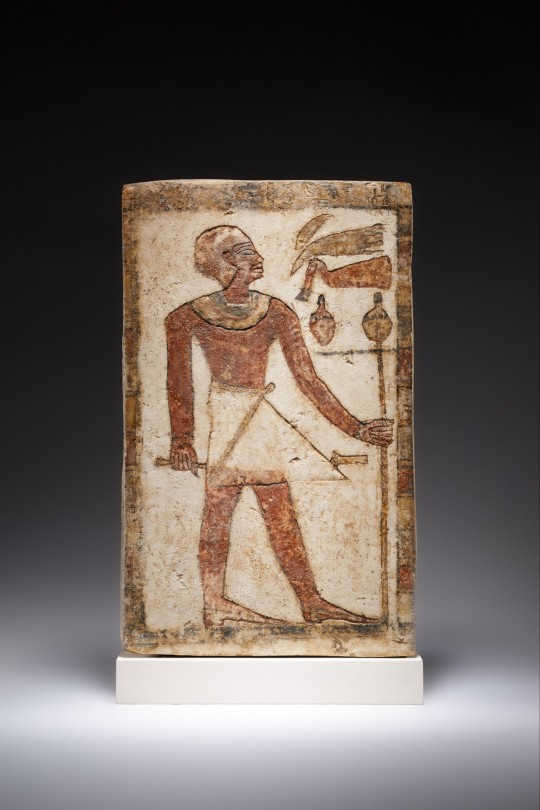
~ Stela of a Man.
Period: Middle Kingdom, 11th Dynasty
Date: ca. 2030–1981 B.C.
Place oforigin: Egypt, Upper Egypt, Thebes, Deir el-Bahri, Cemetery 100, Tomb TT 114, MMA excavations, 1926–27
Medium: Limestone, paint
#ancient#ancient art#history#museum#archeology#ancient egypt#ancient sculpture#ancient history#archaeology#egyptian#egyptology#Egypt#stela of a man#11th Dynasty#middle kingdom#thebes#ca. 2030 b.c.#ca. 1981 b.c.
613 notes
·
View notes
Text

Hippopotamus figurine
Middle Kingdom–Second Intermediate Period
ca. 1981–1550 B.C.
201 notes
·
View notes
Photo
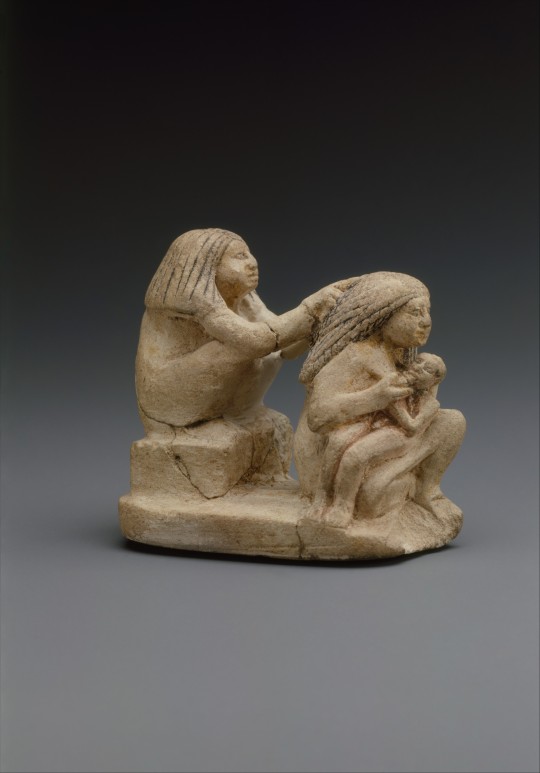


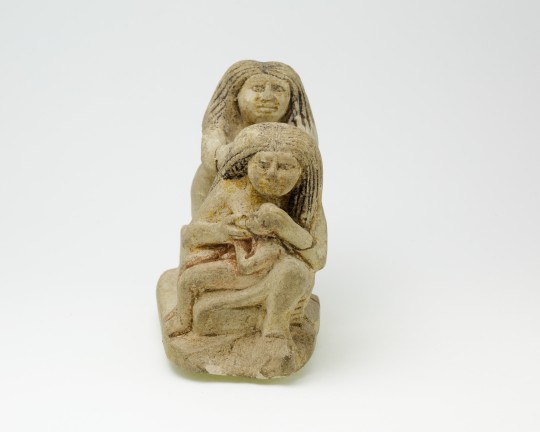
Group of two women and a child,
Middle Kingdom–Early New Kingdom, ca. 1981–1500 B.C.
Limestone, paint
H. 7.1 cm (2 13/16 in.); W. 4.3 cm (1 11/16 in.); L. 8.2 cm (3 1/4 in.)
Courtesy: The Met
#art#design#sculpture#egypt#women#mother's day#child#limestone#paint#middle kingdom#new kingdom#themet#style#history
156 notes
·
View notes
Photo
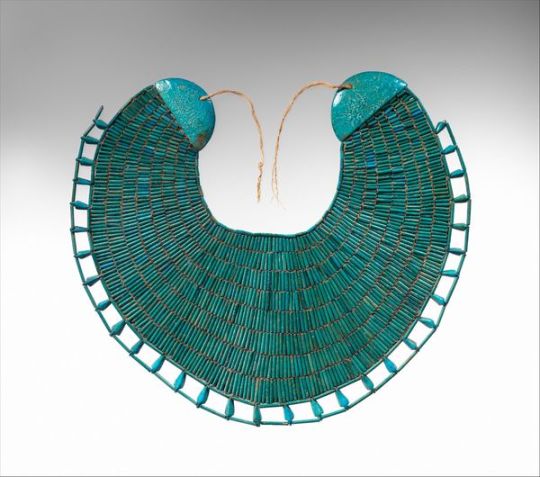
Broad Collar of Wah.
Middle Kingdom, Dynasty 12, reign of Amenemhat I, early,
ca. 1981–1975 B.C. Upper Egypt, Thebes, Southern Asasif, Tomb of Wah (MMA 1102), Mummy, in wrappings on chest, MMA excavations, 1920.
Faience, linen thread.
Dimensions:H. 34.5 cm (13 9/16 in.); W. 39 cm (15 3/8 in.)The Met
22 notes
·
View notes
Text
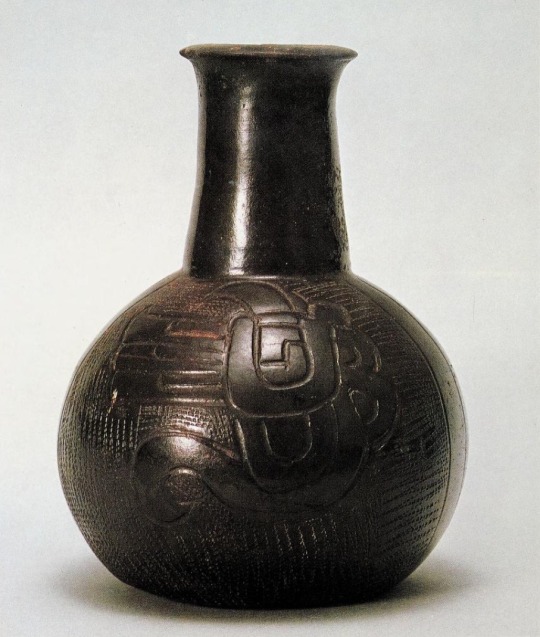
CHAVÍN CULTURE, CUPISNIQUE STYLE
Bottle with incised head ca. 800-500 B.C. Incised and rocker-stamped black ceramic; height 16 cm.
North coast, Chicama Valley Rafael Larco Herrera Museum, Lima.
From: “Museums of the Andes”, 1981. 
8 notes
·
View notes
Photo
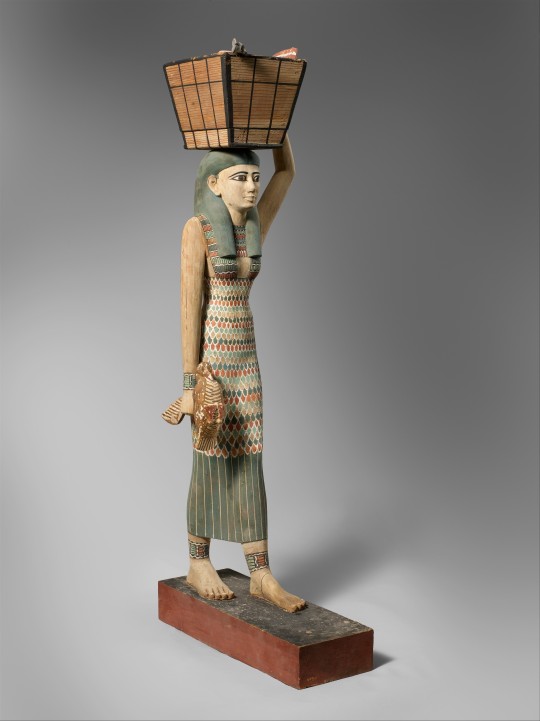
Estate Figure ca. 1981–1975 B.C.
Egypt, Middle Kingdom
This masterpiece of Egyptian wood carving was discovered in a hidden chamber at the side of the passage leading into the rock cut tomb of the royal chief steward Meketre.
Striding forward with her left leg, the woman carries on her head a basket filled with cuts of meat. In her right hand she holds a live duck by its wings.
The woman is richly adorned with jewelry and wears a dress decorated with a pattern of feathers, the kind of garment often associated with goddesses. Thus, this figure and its companion in Cairo may also be associated with the funerary goddesses Isis and Nephthys who are often depicted at the foot and head of coffins, protecting the deceased.
1 note
·
View note
Text
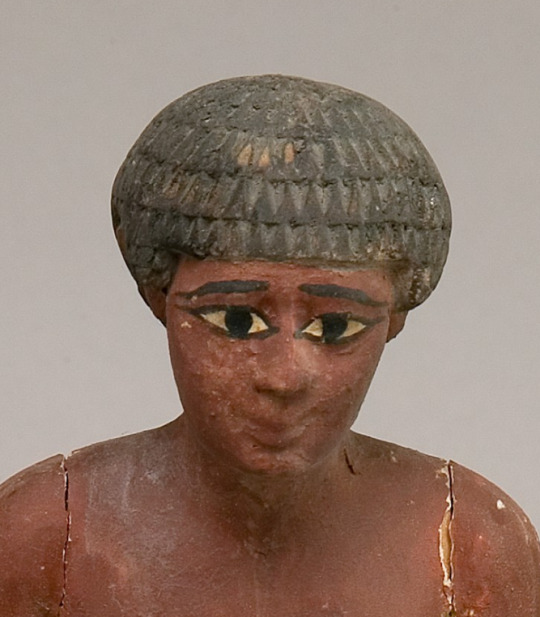

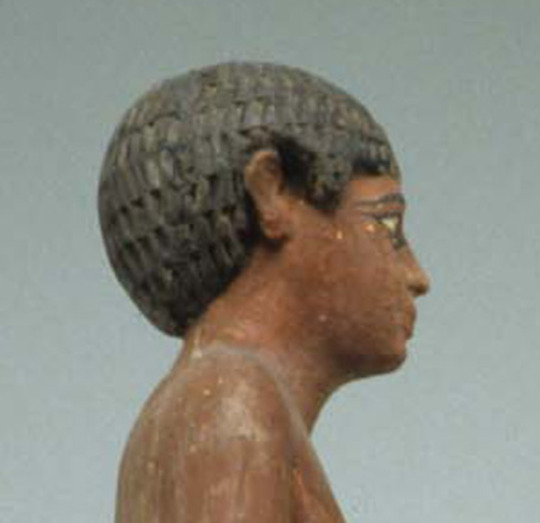


Statuette of Merer - Met Museum Collection
Inventory Number: 10.176.59
Middle Kingdom, Dynasty 10–11, ca. 1981–1802 B.C.
Location Information: From Egypt; Said to be from Middle Egypt, Meir; Probably from Asyut (Lykopolis)
Description:
The four statues 10.176.57-.60 belonged to the Scribe of Divine Offerings Merer. Their short kilts are covered with spells from the Coffin Texts. The phrase inscribed on the two middle-sized figures (.58 and .60) is typical: "Oh Osiris Merer, come with me and I will open for you your eyes that they may lead you on the ways of darkness and that they may put fear of you into the Imperishable Ones, as did Horus for his father Osiris."
#Statuette of Merer#middle kingdom#dynasty 10#dynasty 11#middle egypt#upper egypt#meir#asyut#lykopolis#met museum#10.176.59#mens hair and wigs#MKMHW
0 notes
Text
Statue of Nebhepetre Mentuhotep II (detail), (ca. 2030–2000 B.C.)
Mentuhotep dynastic line was quickly extinguished and a new one, Egypt's Twelfth Dynasty, was founded by a capable commoner named Amenemhat I. The Twelfth Dynasty, 1981 –1802 B.C., represented the Middle Kingdom at the zenith of its political power and cultural influence.
An image of a member of that dynasty, Amenemhat III, who ruled ca. 1859–1813 B.C., is the focal point of the entire exhibition. This work testifies to the success of Middle Kingdom artists in rediscovering the skills of the Old Kingdom and then progressing to greater heights of creative accomplishment.
Head of a Statue of Amenemhat III Wearing the White Crown from the collection of the Ny Carlsberg Glyptotek in Copenhagen, Denmark, is an unsurpassed masterpiece even in its severely damaged form. It was sculpted from graywacke, a hard siltstone from quarries near the Red Sea. The Egyptians were master carvers of graywacke as far back as the fabled Narmer Palette, executed in honor of the first pharaoh around 3100 B.C.

0 notes
Photo

String of Egyptian Wedjat Amulets
Period: Middle Kingdom
Dynasty 12–13 Date: ca. 1981–1640 B.C.
39 notes
·
View notes
Text
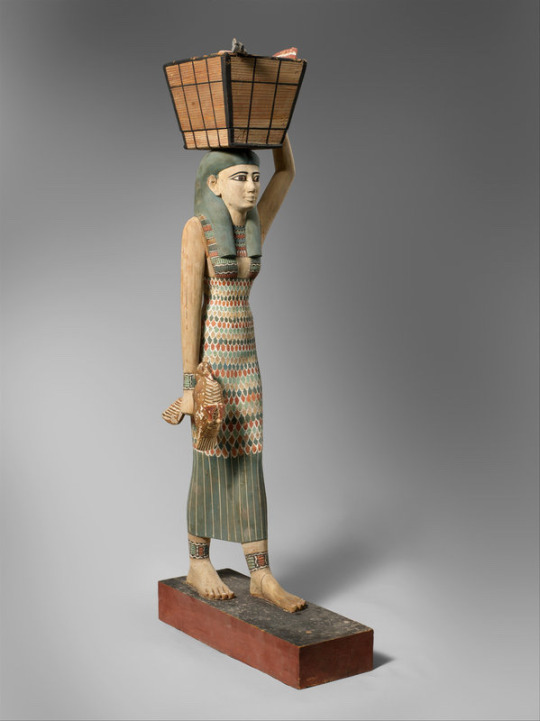
Estate Figure, Middle Kingdom, Dynasty 12, early reign of Amenemhat I, ca. 1981–1975 B.C. From Egypt, Upper Egypt, Thebes, Southern Asasif, Tomb of Meketre (TT 280, MMA 1101), serdab, MMA excavations, 1920. Wood, gesso, paint.
Courtesy Alain Truong
16 notes
·
View notes
Photo

Lintel of Amenemhat I and Deities (ca. 1981–1952 B.C.) | Middle Kingdom In this relief Amenemhat I (𓇋𓏠𓈖𓅓𓄂𓏏) “ı͗mn-m-ḥ3.ṯ”“Amun is in Front” is shown celebrating his thirty-year 𓎈𓆴 jubilee (Sed Festival) 𓋴𓂧𓈅𓉳𓎳 “h(A)b-sd”, ritually demonstrating that he was still vigorous and fit to rule 𓋾𓏘𓄿𓀭 “ḥq3”. The king 𓇓𓈖𓏏 “nsw” is flanked by the jackal-headed god Anubis 𓇋𓈖𓊪𓅱𓃣 “inpw” and the falcon-headed Horus 𓅃 “ḥrw”, deities 𓊹𓊹𓊹 “nṯrw” closely associated with coronation rituals; each god offers him an ankh 𓋹𓈖𓐍 “ˁnḫ” the hieroglyph 𓌃𓂧𓅱𓀁𓊹 “mdw-nṯr” (divine writing) for life. To the left stands Nekhbet 𓇑𓃀𓏌𓏏𓅐 “nḫb.t”, patron goddess of Upper Egypt 𓇾𓇙 “t3-šmˁ” (the south), and on the right is Wadjet 𓇆𓇌𓏏𓐎𓆗 “wAḏ.yt”. of Lower Egypt 𓇾𓇊 “t3-mḥw” (the north), creating a symmetrical composition that evokes the unified land 𓇾 “t3”. The king wears a tightly curled wig, with an uraeus-cobra 𓅜𓏏𓆘 “3ḫ.t” on his brow to protect 𓎂 or 𓎃 “s3” him from his enemies 𓐍𓆑𓏏𓏭𓀏 “ḫfty” and the false beard of kingship. He carries a flail 𓈖𓐍𓐍𓌅 “nḫ3ḫ3”, also a symbol of his rule, and a ceremonial instrument known as a mekes. Period: Middle Kingdom Dynasty: Dynasty 12 Reign: reign of Amenemhat I–Senwosret I Date: ca. 1981–1952 B.C. Geography: From Egypt, Memphite Region, Lisht North, Pyramid Temple of Amenemhat I, MMA excavations, 1907 Medium: Limestone, paint Dimensions: H. 36.8 cm (14 1/2 in.); W. 172.7 cm (68 in.); D. 13.3 cm (5 1/4 in.) 𓋹𓎬𓋹𓎬𓋹𓎬𓋹𓎬𓋹𓎬𓋹𓎬𓋹𓎬𓋹𓎬𓋹𓎬𓋹𓎬𓋹𓎬𓋹𓎬𓋹𓎬𓋹𓎬𓋹𓎬𓋹𓎬 📸 @egyptologylessons © 𓋹𓊽𓋴𓆖𓎛𓇳𓎛 (@metmuseum and description) 𓊁𓊁𓊁𓊁𓊁𓊁𓊁𓊁𓊁𓊁𓊁𓊁𓊁𓊁𓊁𓊁𓊁 #Ancienthistory #historyfacts #historylovers #ancientegypt #hieroglyphics #ägypten #egyptologist #egyptianhistory #egyptology #hieroglyphs #egypte #egyptians #egitto #埃及 #مصر #egipto #이집트 #art #culture #history #lintel #amenemhat #metropolitanmuseumofart #anubis #horus https://www.instagram.com/p/CafWm9IOY4n/?utm_medium=tumblr
#ancienthistory#historyfacts#historylovers#ancientegypt#hieroglyphics#ägypten#egyptologist#egyptianhistory#egyptology#hieroglyphs#egypte#egyptians#egitto#埃及#مصر#egipto#이집트#art#culture#history#lintel#amenemhat#metropolitanmuseumofart#anubis#horus
11 notes
·
View notes
Text

~ Amulet with ankhs.
Period: Middle Kingdom; 12th-13th Dynasty
Date: ca. 1981–1640 B.C.
Place of origin: Egypt, Memphite Region, Lisht North (Tomb 954, Burial 954L, MMA excavations, 1921–22)
Medium: Quartz, gold
#ancient art#ancient#history#museum#archeology#ancient history#archaeology#egyptology#egypt#egyptian#ancient Egypt#ankh#amulet with ankhs#12th dynasty#13th dynasty#middle kingdom#ca. 1981 b.c.#ca. 1640 b.c.#quartz#gold
1K notes
·
View notes
Text
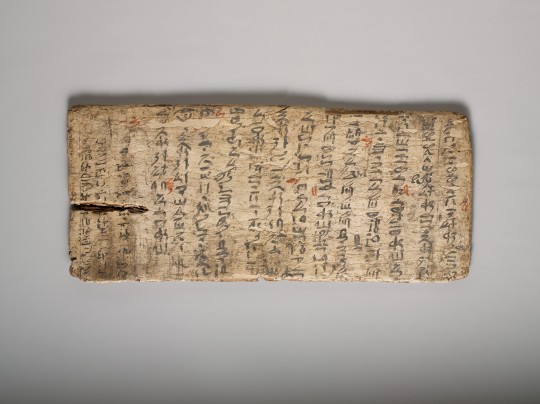
Writing board
Ancient Egypt, Middle Kingdom, Dynasty 12, ca. 1981–1802 B.C.
MEDIUM: Wood, gesso, paint
ACCESSION NUMBER: 28.9.4
The Met
Learning how to read and write in Ancient Egypt wasn't the easiest feat - a complex writing system that employed a few writing conventions posed a lot of difficulties for the apprentices studying to become scribes.
***It is also important to note here that the access to education was extremely limited: J. Baines estimates that only 1-5% of Ancient Egypt's population could read (and write) to some degree [1].***
Typically, a student beginning their scribal education would start with learning how to read and write hieratic [2] - they would be tasked with copying fragments of texts (like the model letter seen above) to learn the textual forms they were supposed to master for their future duty as a scribe. Such exercises would require intensive repetition and regular exercise drill, therefore a suitable medium to write on was needed. This is where a writing board would come in.
The wooden board above was covered with a layer of gesso thus allowing it to be used repeatedly - after a finished exercised the board would be whitewashed again and ready for the next round of writing and grammar drills. Interestingly enough the specimen above bears the traces of earlier exercise on its left side. The student used black paint/ink to write the model letter, while the teacher corrected his mistakes with red one.
[1] Please do note that such estimates are vague and should be treated with caution as they are based on assumptions pertaining to the size of Ancient Egyptian population. Such estimates also fail to show the possible fluctuations in literacy rates that would have been the result of social and historical changes. (See also: ARTICLE)
[2] A cursive hieroglyphic script that uses simplified versions of monumental hieroglyphs as well as various ligatures (composite forms of two or more signs) to ease the flow of text and speed up the writing process. Hieratic was used for documents, correspondence exchange, administrative texts, lists, literary works, scientific texts, etc.
#ancient egypt#ancient egyptian script#hieroglyphs#scribe#scribedom#writing utensils#writing equipment#ancient egyptian art#ancient education#literacy#middle kingdom#education#hieratic
9 notes
·
View notes
Photo
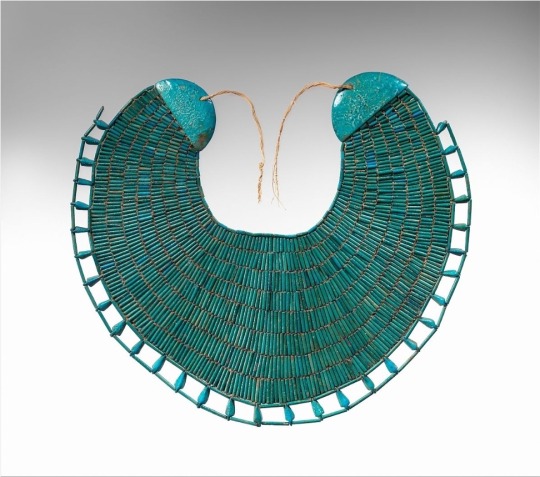
~ Broad Collar of Wah.
Period: Middle Kingdom, 12th Dynasty; reign of Amenemhat I (early)
Date: ca. 1981–1975 B.C.
Place of origin: Egypt, Upper Egypt, Thebes, Southern Asasif, Tomb of Wah (MMA 1102), Mummy, in wrappings on chest, MMA excavations, 1920
Medium: Faience, linen thread
44 notes
·
View notes
Photo

Gate of Ptolemy Philomeder, B.C. 180, Karnac, Robert Murray, ca. 1856, Metropolitan Museum of Art: Photography
Robert O. Dougan Collection, Gift of Warner Communications Inc., 1981
Size: Image: 9 1/8 × 7 3/8 in. (23.2 × 18.7 cm) Mount: 16 in. × 12 3/16 in. (40.6 × 31 cm)
Medium: Albumen silver print
https://www.metmuseum.org/art/collection/search/263189
19 notes
·
View notes
Photo
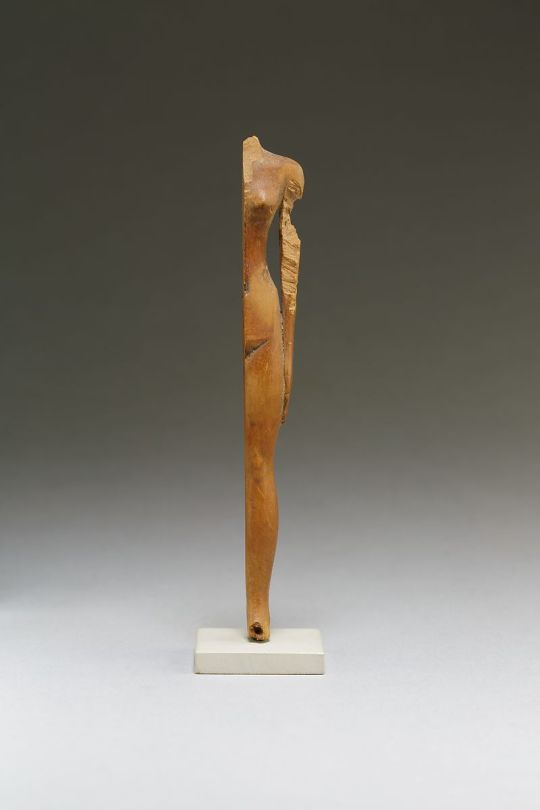

Fragment of female figure ca. 2124–1981 B.C.
Middle Kingdom–Early New Kingdom, Egypt
3 notes
·
View notes